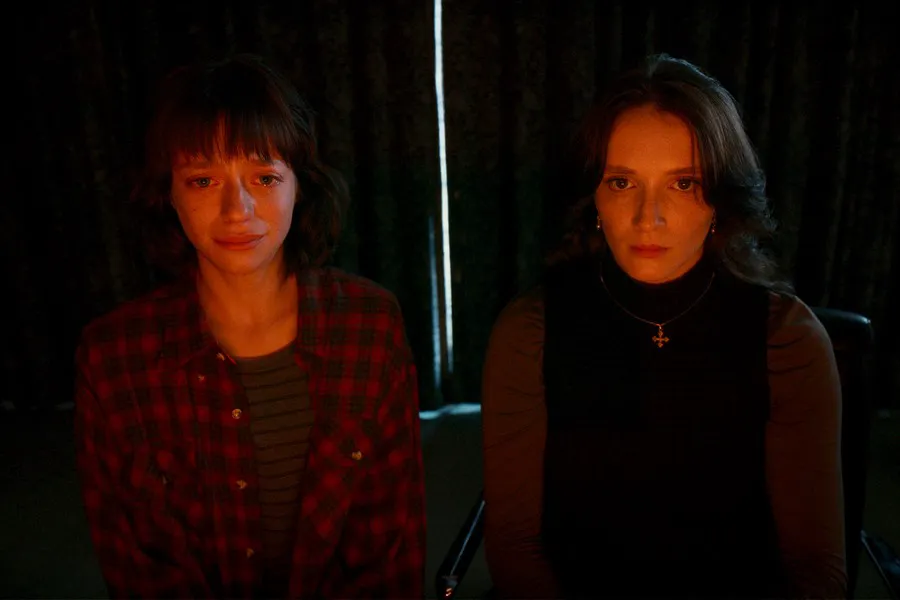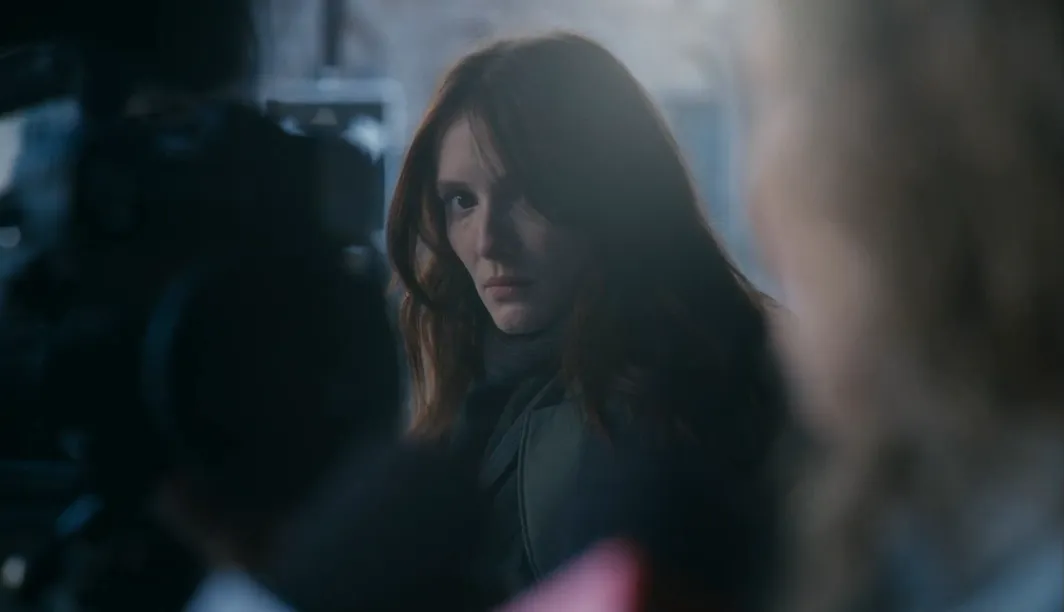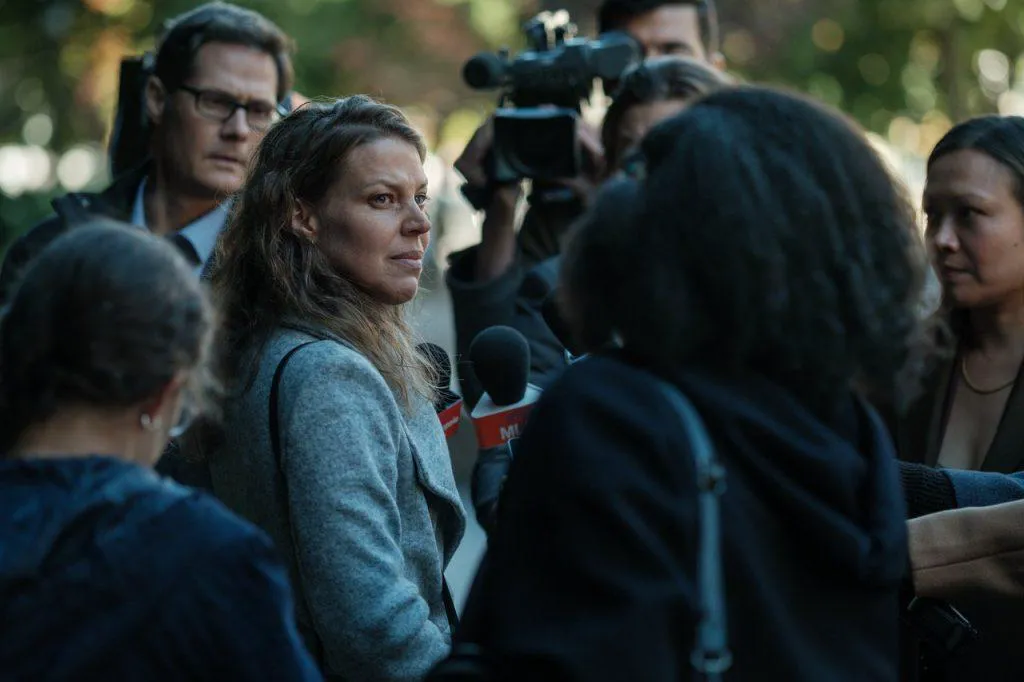Red Rooms: A Chilling Dive into Darknet Depravity
In Quebec, Canada, a sensational trial unfolds against Ludovic Chevalier (Maxwell McCabe-Lokos), a sadistic individual accused of torturing three underage girls to death. The gruesome acts were allegedly broadcast live on the darknet for paying viewers. Despite substantial evidence, doubts linger, with many believing Chevalier is a scapegoat in a case the prosecution struggles to solve. At the heart of this unsettling drama is Kelly-Anne (Juliette Gariépy), a model who becomes consumed by the case, meticulously observing every detail. Driven by an insatiable curiosity, she embarks on her own investigation, seeking a missing darknet video of the third girl’s murder, a piece of evidence that could unravel the truth about Chevalier’s involvement.

Juliette Gariépy as Kelly-Anne in “Red Rooms”
Pascal Plante’s Unflinching Vision
“Red Rooms” is directed by Pascal Plante, a Canadian filmmaker known for his genre-bending approach. Plante’s debut was the romantic drama “Fake Tattoos,” followed by “Nadia, Butterfly,” a film exploring the demanding life of an Olympic swimmer. “Red Rooms” initially presents itself as a courtroom drama, reminiscent of classic legal procedurals. However, it avoids becoming a mere “Anatomy of a Fall” clone or a “Spotlight” retread, despite some structural similarities. The film’s core lies in Kelly-Anne’s independent investigation, plunging deep into the darknet’s abyss, a digital hell teeming with pedophiles, drug dealers, and hitmen. Yet, “Red Rooms” resists the label of a typical screenlife thriller, as Plante deliberately avoids showing the explicit content on the computer screen, a stylistic choice that ultimately defines the film’s unique impact.

Juliette Gariépy as Kelly-Anne in “Red Rooms”
Kelly-Anne: A Modern Lisbeth Salander?
Kelly-Anne can be seen as a Canadian echo of Lisbeth Salander from “The Girl with the Dragon Tattoo”—possessing a similarly cold demeanor, a detached, almost emotionless gaze, and a sense of social detachment. She stands apart from the typical true-crime enthusiast. That role is filled by Clémentine (Laurie Babin), a homeless woman who provides a stark contrast to Kelly-Anne, highlighting her focused obsession and dispassionate absorption in the events. For much of the film, Kelly-Anne is a blank canvas, a focal point for the audience’s projections, a provocateur and a controller all in one. Her actions, devoid of explicit judgment, are open to interpretation, and her unsettling interest in the high-profile case could even be mistaken for a hidden fascination with violence and sadism. This ambiguity is just one of the tools Plante uses to ignite the audience’s imagination.

Rebecca Mckinnon in “Red Rooms”
The Power of Suggestion: Horror Without Gore
“Red Rooms” is surprisingly subdued for a cyber-horror film. Plante consciously avoids jump scares, loud noises, and graphic violence. No fake blood is spilled, and we never see the dismembered bodies of the victims, but we do hear their screams. The film’s most chilling moment unfolds in complete silence, its oppressive horror stemming solely from the context. By keeping the most gruesome acts off-screen, Plante allows the viewer to project their own personal triggers and nightmares onto the narrative, creating an experience that transcends the director’s visual choices. It’s a simple yet effective technique that manages to deeply resonate, largely due to Plante’s skill in building suspense with jump cuts and intimate lighting.
“Red Rooms” can be considered an immersive film, its primary goal not just to tell a story, but to fully engage the viewer, making them a part of a dark and disturbing experience largely constructed from their own fears. The unknown is what frightens people most, and “Red Rooms” does everything possible to keep us in that state of uncertainty for as long as possible.